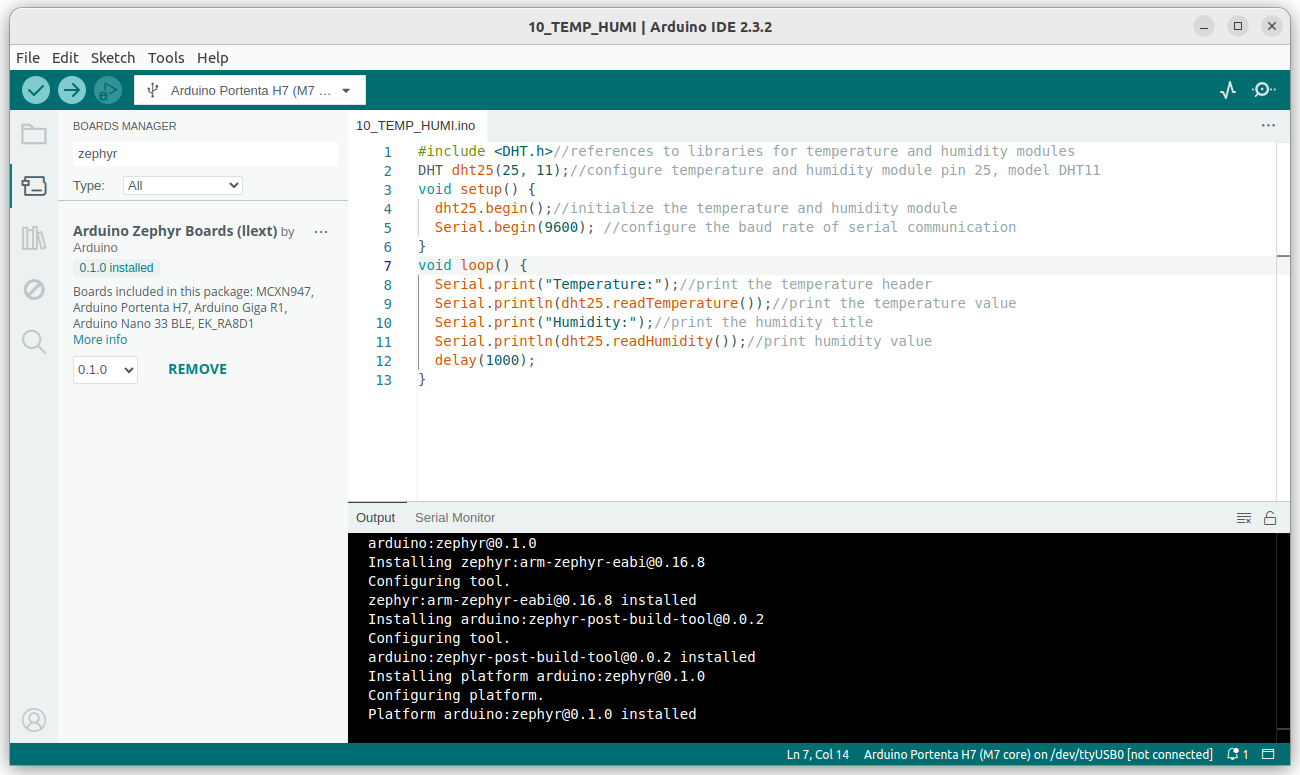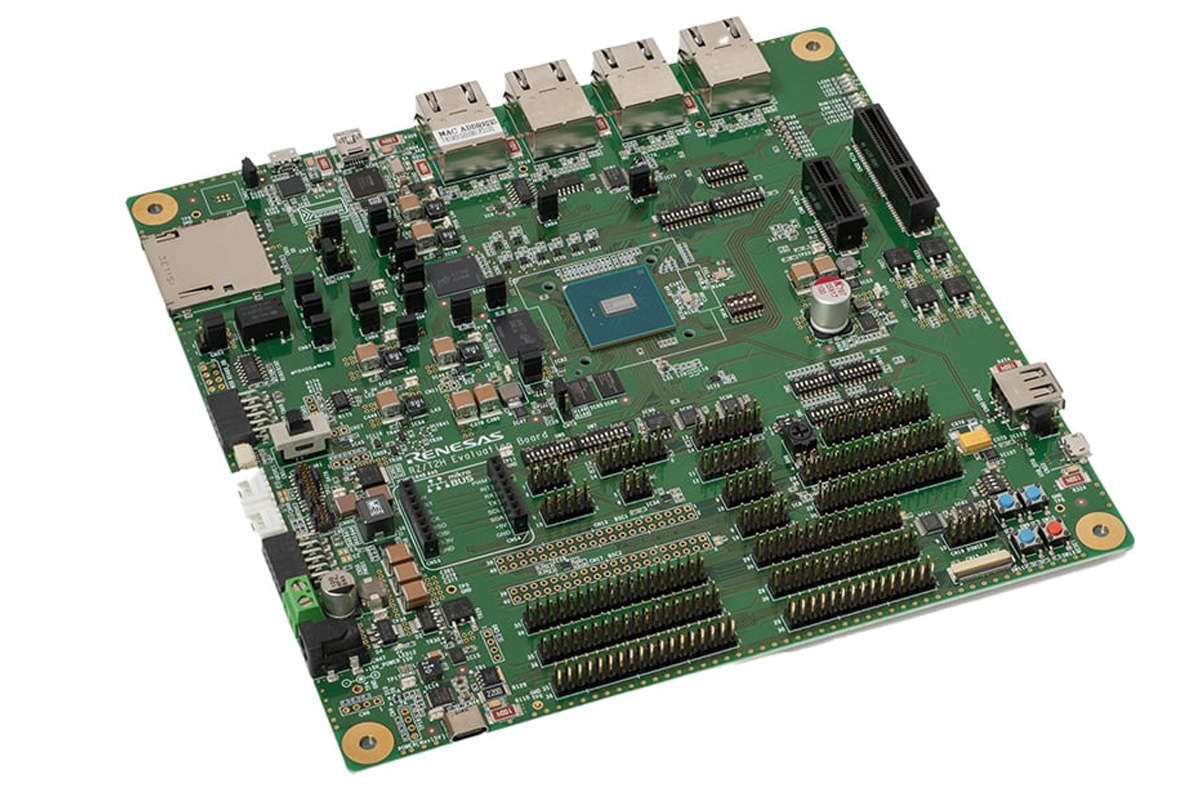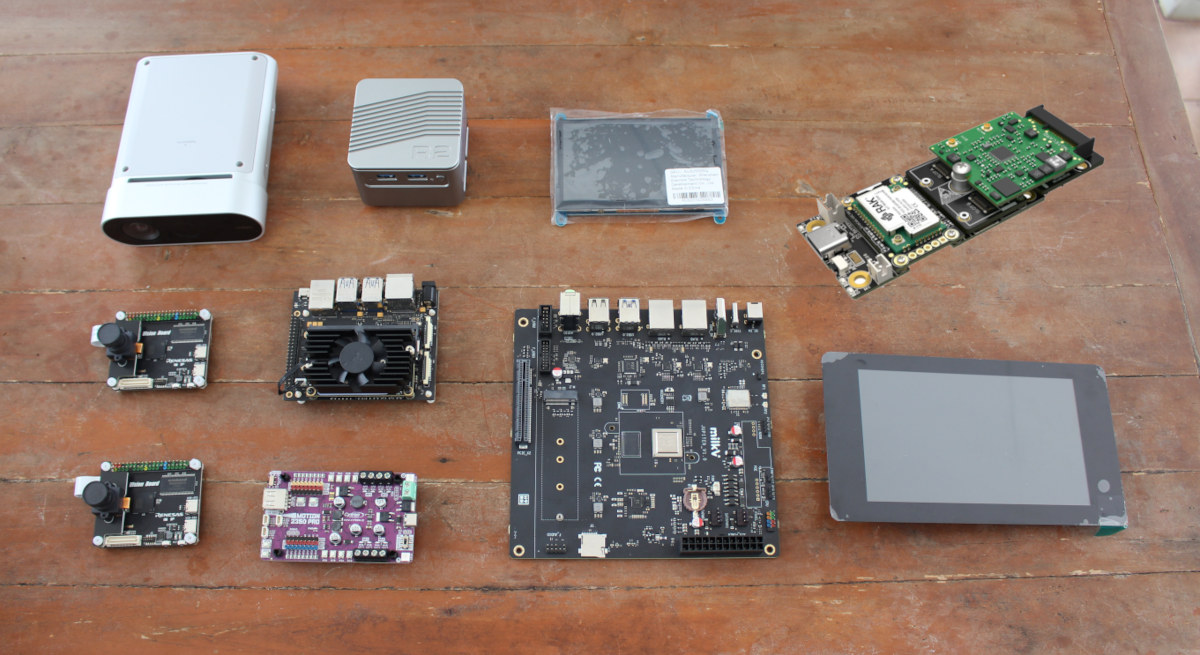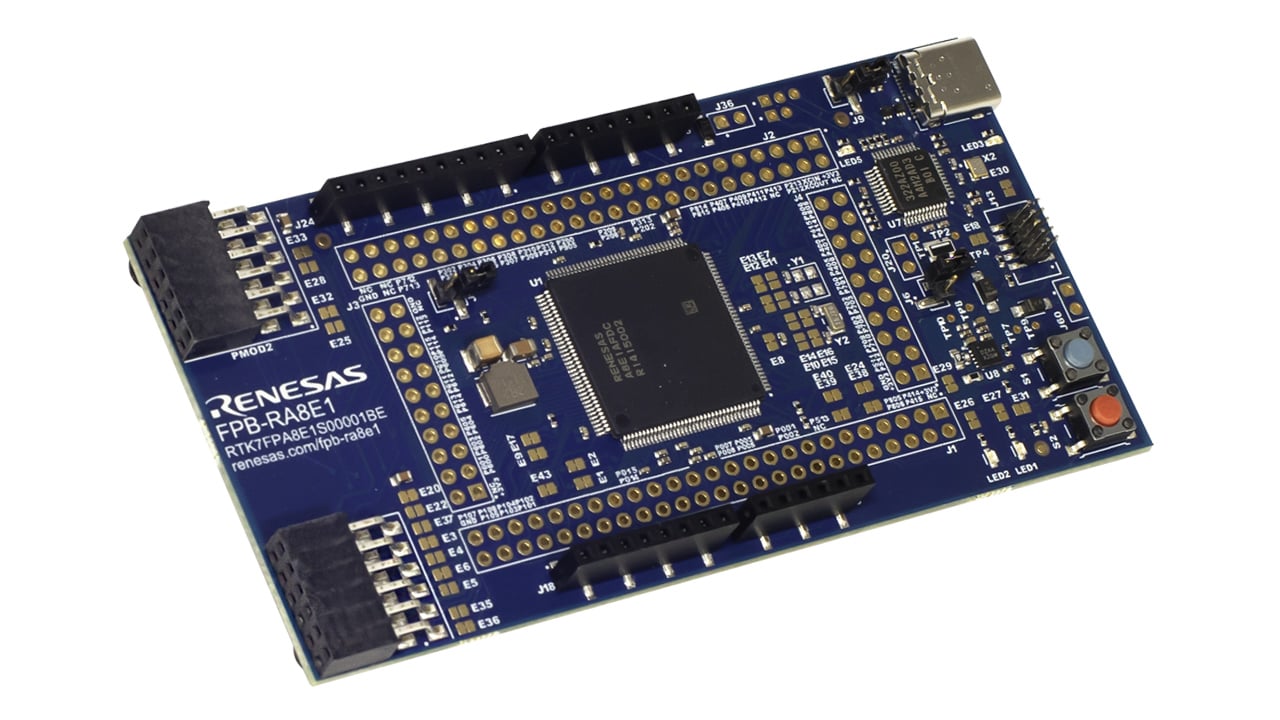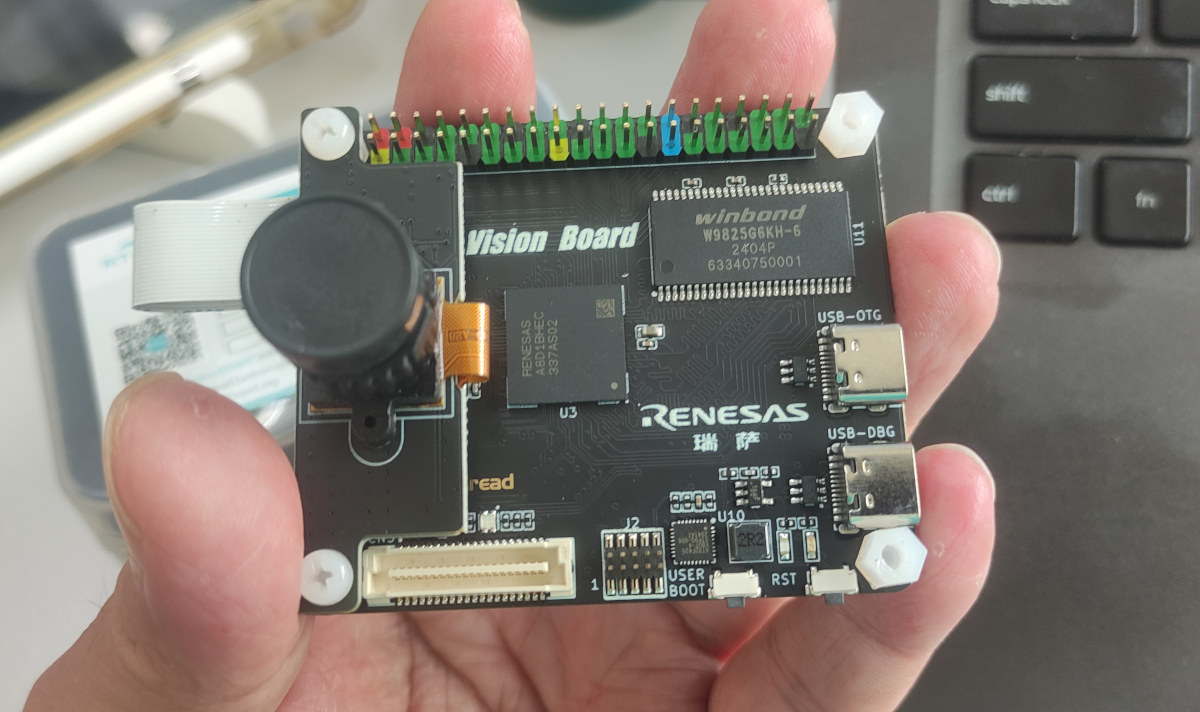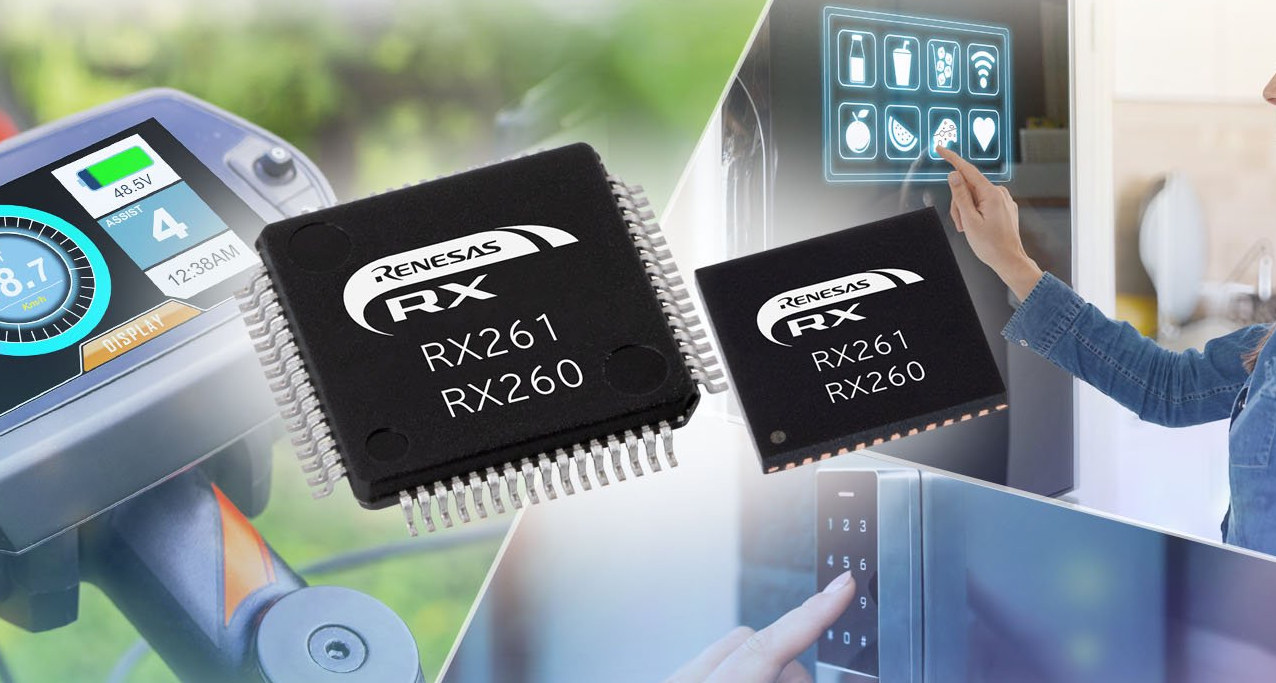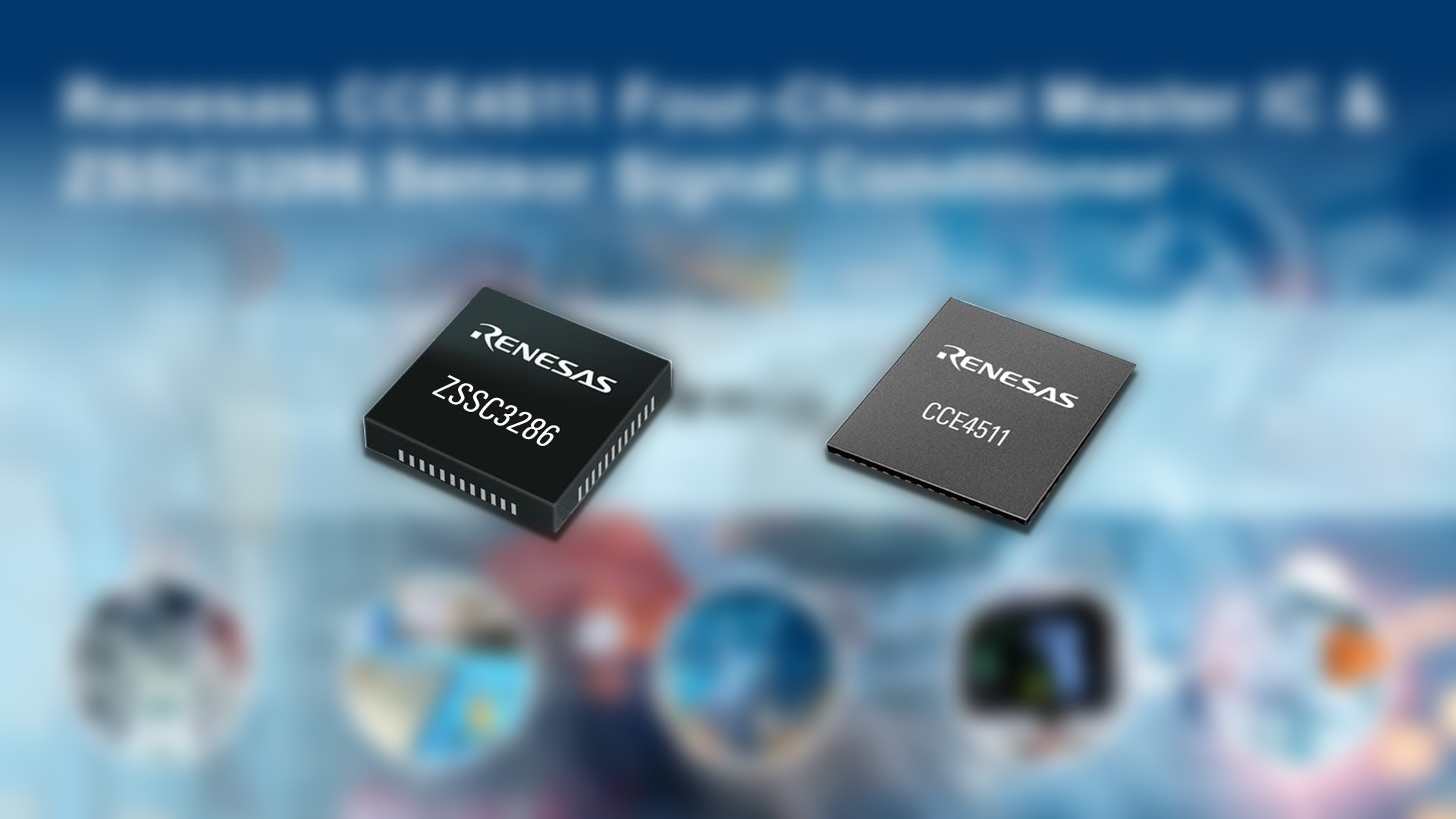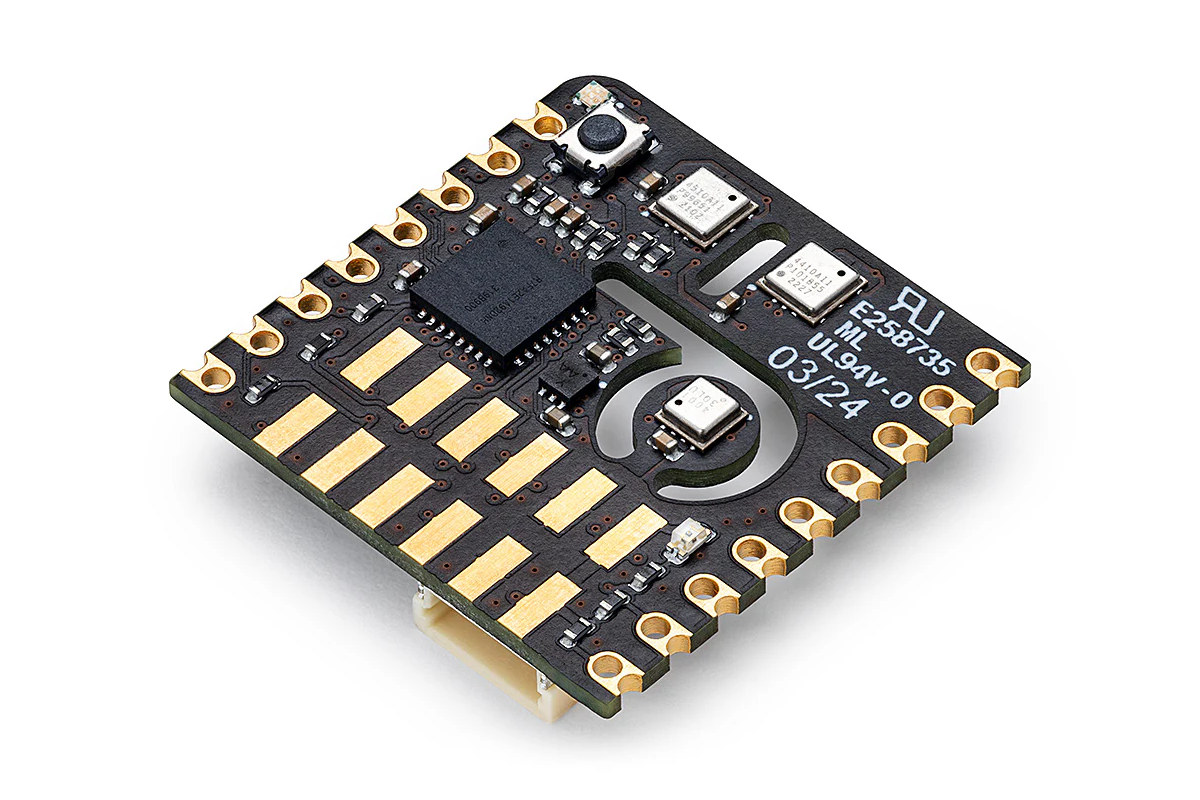Last July, Arduino announced plans to switch from the soon-to-be deprecated Arm Mbed to Zephyr RTOS, and the company has now outed the first beta release of “Arduino Core for Zephyr OS” for a range of boards. From the user’s perspective, this should not change anything. However, there are massive changes under the hood and Arduino sketches are built and executed differently with the Arduino Core for Zephyr. Some highlights of the new Zephyr-based Arduino core implementation include: Dynamic sketch loading – Sketches are compiled as ELF files and dynamically loaded by a precompiled Zephyr-based firmware. Zephyr subsystems support threading, inter-process communication, and real-time scheduling. Fast compiling and smaller binaries since a thin layer of user code and libraries are compiled, while the rest of the ZephyrOS is already binary. You can get started straightaway with the code and instructions on GitHub. You’ll need Arduino 2.x.x for this to work. […]
Renesas RZ/T2H Cortex-A55/R52 industrial MPU and Dev Board support EtherCAT, PROFINET, and TSN
Renesas RZ/T2H industrial MPU is the most powerful member of its RZ/T2 series of real-time microprocessors. The MPU features four Arm Cortex-A55 CPUs for application tasks and two Cortex-R52 CPUs for real-time control. It supports 9-axis motor control with 3-phase PWM timers, delta-sigma interfaces, and encoder interfaces. It also supports Industrial Ethernet protocols like EtherCAT, PROFINET, and TSN. These features make it ideal for industrial applications such as industrial robots, PLCs, motion controllers, and CNC machines. Renesas launched the RZ/T2L single-core Arm Cortex-R52 MPU just last year, and before that, in 2022, they launched the RZ/T2M dual Arm Cortex-R52 MPU. The RZ/T2L was just a cost-down version of RZ/T2M with an EtherCAT controller, compared to those old controllers the latest RZ/T2H supports 9-axis motor control and compatibility with various industrial Ethernet protocols. Renesas RZ/T2H specifications: CPU 4x Arm Cortex-A55 (64-bit) clocked at up to 1.2GHz with 32KB L1 I/D cache, 1MB L3 cache 2x […]
Giveaway Week 2024 winners announced!
We’re now ready to announce the winners of CNX Software’s Giveaway Week 2024. We offered some of the review samples we tested (and some we did not test) in the last year, and for the fourth year running, RAKwireless also gave away two IoT development kits shipped directly to winners. This year’s prizes also included a RISC-V motherboard, a 3D depth camera, a few Arm development boards, two touchscreen displays, and an Alder Lake-N mini PC/router. All those products can be seen in the photo, minus some accessories. You’ll find more than seven devices because we organized the third Giveaway Week on CNX Software Thailand simultaneously with four prizes. We had seven winners on CNX Software: Jupiter RISC-V mini-ITX motherboard – François-Denis, Canada Orbbec Femto mega 3D depth and 4K RGB camera – Reifu, Japan RAKwireless Blues.ONE LoRaWAN, LTE-M, and NB-IoT devkit – OldCrow, Portugal Mixtile Core 3588E development kit […]
Renesas RA8E1 and RA8E2 entry-level Arm Cortex-M85 MCUs target cost-sensitive applications
Renesas has expanded its Arm Cortex-M85-based RA8 series to include two new entry-level MCUs, RA8E1 and RA8E2. The new microcontrollers perform similarly to other Arm Cortex-M85-based microcontrollers and are offered at a lower price point thanks to a streamlined feature set to reduce costs. The RA8E1 and RA8E2 groups of microcontrollers will be useful for high-volume applications in industrial and home automation, healthcare, office equipment, and consumer products. We have previously covered other models in Renesas’ RA8 series, including the Renesas RA8T1, RA8D1, and the very first Cortex-M85 microcontroller, the Renesas RA8M1. The RA8 series consists of microcontrollers based on the Arm Cortex-M85 core with a performance of 6.39 CoreMark/MHz and Arm’s M-Profile Vector Extension which provides a 4x performance boost for DSP and ML workloads while maintaining low power consumption. The RA8E1 and RA8E2 Cortex-M85 microcontroller groups differ mostly in clock speed, available internal and external memory, communication interfaces, […]
Giveaway Week 2024 – RT-Thread Vision board with Renesas RA8D1 Arm Cortex-M85 MCU
It’s already Friday, and the fifty prize of CNX Software’s Giveaway Week 2024 will be the RT-Thread Vision board equipped with a Renesas RA8D1 Arm Cortex-M85 microcontroller, a camera, an optional LCD display, and a 40-pin GPIO header. The board is used as an evaluation platform for the Renesas RA8D1 MCU and RT-Thread real-time operating system. As its name implies, it’s mainly designed for computer vision applications leveraging the Helium MVE (M-Profile Vector Extension) for digital signal processing (DSP) and machine learning (ML) applications. I haven’t reviewed it myself and instead, received two samples from RT-Thread who sent them to me by mistake, so I’ll give them away here and on the Thai website. But it was reviewed by Supachai who tested the RT-Thread Vision board with OpenMV and ran a few benchmarks last June. The Helium MVE did not seem to be utilized in OpenMV at that time (June […]
Renesas RX260 and RX261 64 MHz RXv3 MCUs target power-efficient touch applications
The Renesas RX260 and RX261 two new 64 MHz microcontrollers part of the high-performance, high-efficiency RX product family with integrated capacitive touch-sensing and high power efficiency in both active and standby modes. The microcontrollers are based on the RXv3 core with a performance score of 355 CoreMark @ 64MHz, which is “2.5 times higher than competing 64 MHz class MCUs.” The chips are also power-efficient, with a consumption rate of 69μA/MHz during active operation and 1μA only in standby mode. According to Renesas, the chips are up to 25% more efficient in active mode and 87% more efficient in standby mode than other 64 MHz class MCUs. Another competing factor is the onboard 8KB of data flash, eliminating the need for external EEPROM. The RX260 and RX261 Group MCUs support noise- and water-resistant capacitive touch via Renesas’ third-generation capacitive touch IP (CTSU2SL). They also integrate an “automatic judgment function” that […]
Renesas CCE4511 IO-Link master IC and ZSSC3286 IO-Link sensor signal conditioner IC are designed for industrial sensors and actuators
Renesas has recently introduced the CCE4511 four-channel IO-Link master IC and the ZSSC3286 IO-Link-ready dual-channel sensor signal conditioner IC along with their development boards designed for harsh industrial environments. The CCE4511 master IC supports four channels with 500mA driving current, overvoltage detection, and overcurrent protection, Additionally, it has an integrated IO-Link Frame Handler that reduces microcontroller load. The ZSSC3286on is the first sensor signal conditioner with an integrated IO-Link compliant stack, meaning you don’t need a separate microcontroller for signal handling. Additionally, it features 24-bit ADCs and advanced diagnostic functions for advanced tasks. Both products are optimized for industrial automation, offering energy efficiency, smaller PCB sizes, and robust system diagnostics. CCE4511 IO-Link master and ZSSC3286 sensor signal conditioner IC Specifications CCE4511 IO-Link master Main Chip – CCE4511 4-Channel IO-Link Master PHY with integrated Frame Handler Number of Channels – 4 IO-Link master channels Frame Handler – Hardware frame handler for […]
Arduino Nicla Sense Env module features temperature, humidity, and gas sensors from Renesas
Arduino Nicla Sense Env is a new sensor module with temperature, humidity, and gas (TVOC, NO2, O3) sensing that follows the launch of the Arduino Nicla Sense ME (Motion & Environment) module over three years ago (2021). The implementation of the new module is quite different since the ME module relies on Nordic Semi nRF52832 Cortex-M4 microcontroller and Bosch SensorTech motion and environmental sensor, but the new Nicla Sense Env module is made of parts from Renesas namely the RA2E1 Cortex-M23 microcontroller, the HS4001 humidity and temperature sensor, the ZMOD4410 gas sensor for TVOC and indoor air quality, and the ZMOD4510 gas sensor for NO2, O3, and outdoor air quality. Arduino Nicla Sense Env (ABX00089) specifications: MCU – Renesas RA2E1 Arm Cortex-M23 entry-line microcontroller (not accessible or programmable by the user) CPU core – Arm Cortex-M23 core up to 48 MHz Memory – 16KB SRAM Storage – 128KB flash Sensors […]


